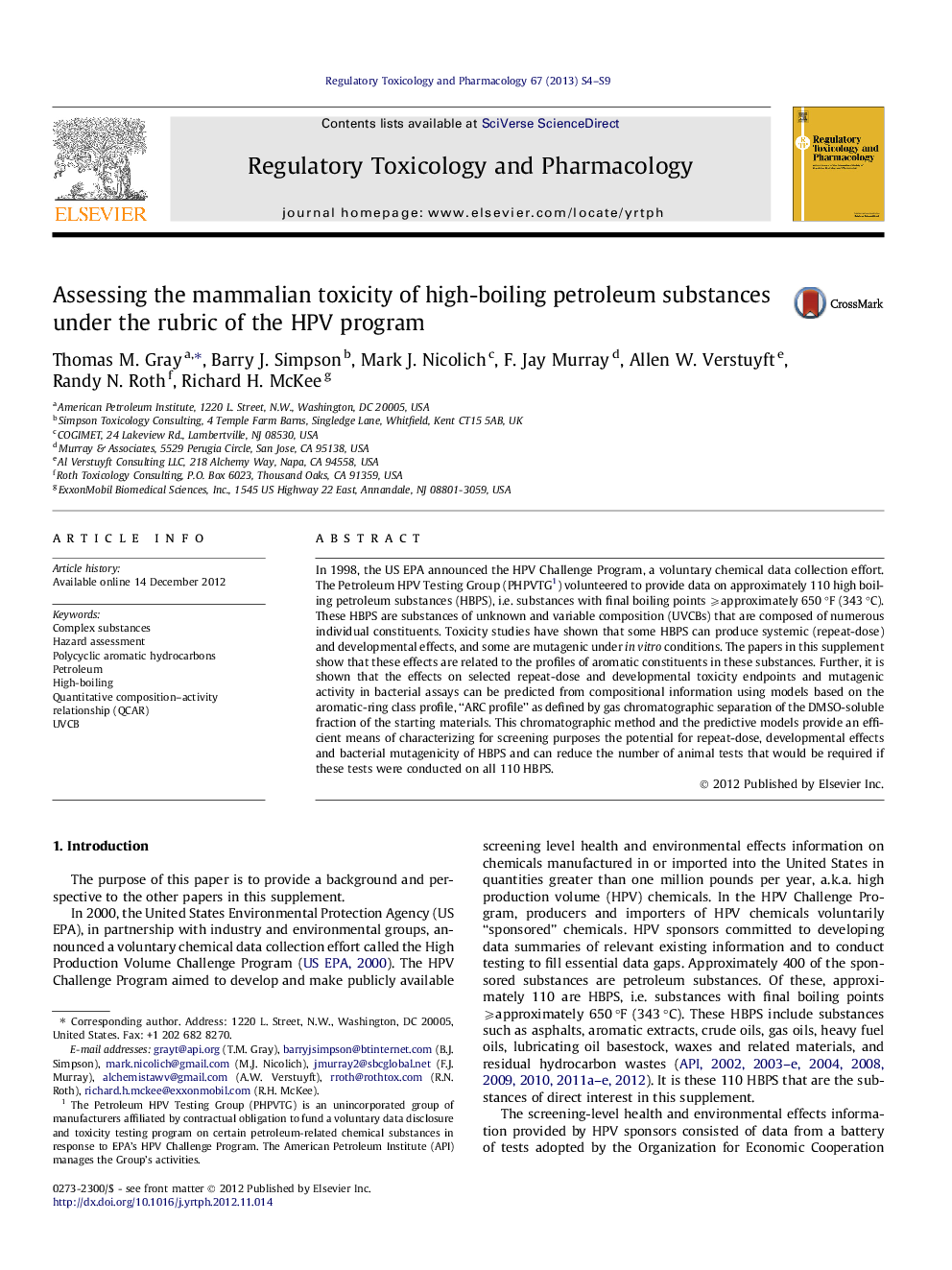| Article ID | Journal | Published Year | Pages | File Type |
|---|---|---|---|---|
| 2592309 | Regulatory Toxicology and Pharmacology | 2013 | 6 Pages |
In 1998, the US EPA announced the HPV Challenge Program, a voluntary chemical data collection effort. The Petroleum HPV Testing Group (PHPVTG1) volunteered to provide data on approximately 110 high boiling petroleum substances (HBPS), i.e. substances with final boiling points ⩾approximately 650 °F (343 °C). These HBPS are substances of unknown and variable composition (UVCBs) that are composed of numerous individual constituents. Toxicity studies have shown that some HBPS can produce systemic (repeat-dose) and developmental effects, and some are mutagenic under in vitro conditions. The papers in this supplement show that these effects are related to the profiles of aromatic constituents in these substances. Further, it is shown that the effects on selected repeat-dose and developmental toxicity endpoints and mutagenic activity in bacterial assays can be predicted from compositional information using models based on the aromatic-ring class profile, “ARC profile” as defined by gas chromatographic separation of the DMSO-soluble fraction of the starting materials. This chromatographic method and the predictive models provide an efficient means of characterizing for screening purposes the potential for repeat-dose, developmental effects and bacterial mutagenicity of HBPS and can reduce the number of animal tests that would be required if these tests were conducted on all 110 HBPS.
• Provides the regulatory background for the work reported in the supplement. • Summarizes the contents of the papers contained in the supplement. • Highlights chemical complexity/variability of high-boiling petroleum substances. • Summarizes prior testing identifying PACs as HBPS components associated w/toxicity. • Describes Method II to characterize wt% of 1–7 ring compound classes in HBPS.
